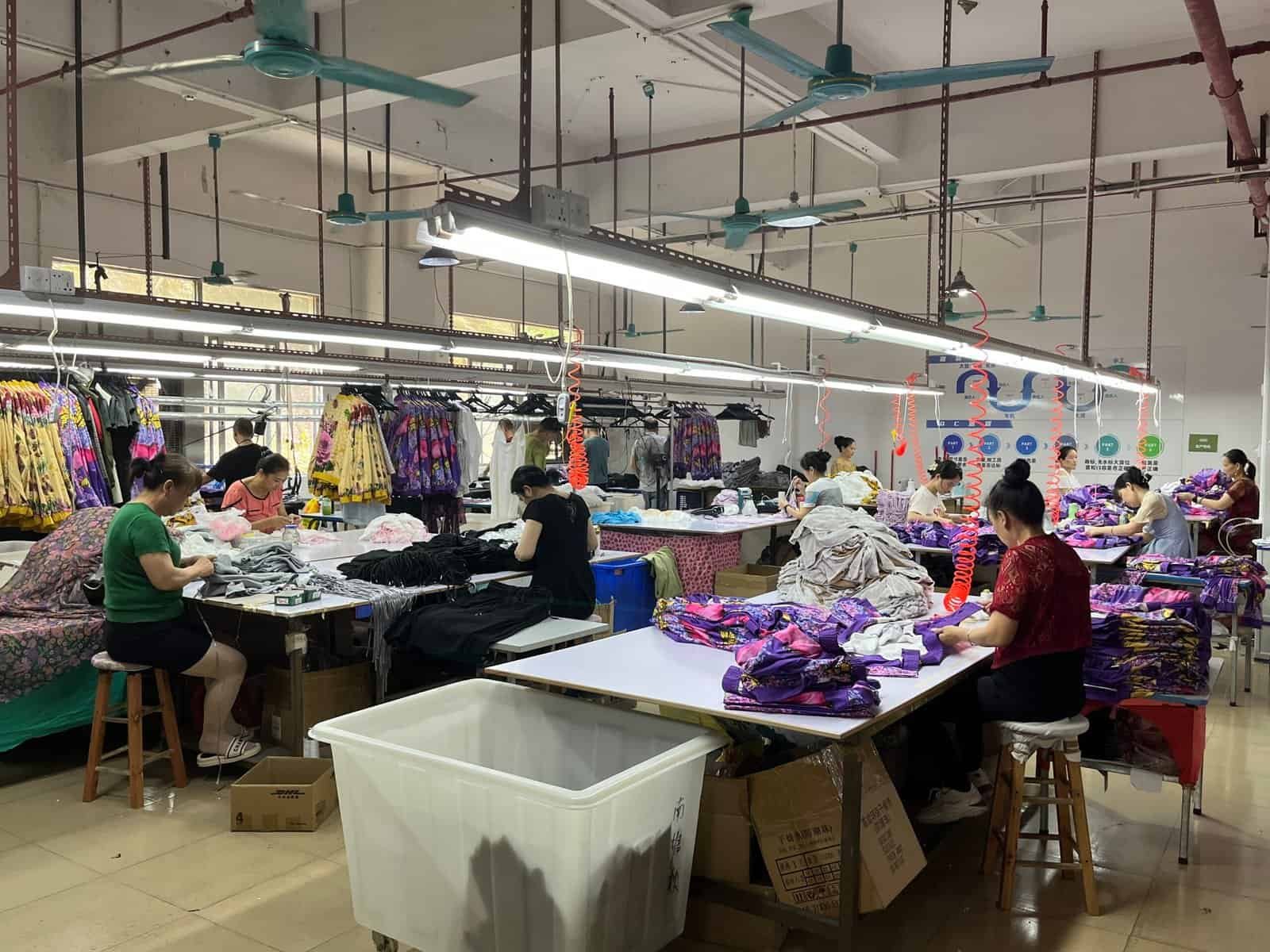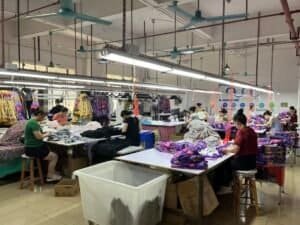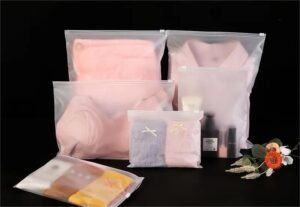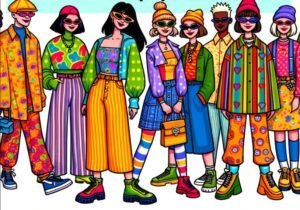As we all know, the fashion industry covers multiple aspects such as clothing design, production, sales, and consumption, and contains complex and intricate clothing craftsmanship. The importance of clothing manufacturers in the field of clothing production is self-evident. Therefore, clothing manufacturers are closely related to the fashion industry, and the clothing they produce is likely to lead the trend of the global fashion industry. In this article, we will compare clothing manufacturers in China and America. After reading it, you will understand their differences in production, quality, cost, etc. We hope you will have a better understanding of the clothing industry in the end.

Overview of Chinese Clothing Manufacturers
Historical background.
Chinese clothing manufactures can trace back to approximately 100,000 years ago. We can briefly divide the history into six periods: Primitive Period, Neolithic Age, Bronze Age, Iron Age, Steam Age and Electrical Age. You can refer to the following table for more information.
| Period | Introduction | Production Areas | Representative Techniques |
|---|---|---|---|
| Primitive Period (approximately 100,000 years ago) | In the primitive stage, human ancestors used animal skins and leaves as their clothing. They used bone needles and thread to sew animal skins and leaves, forming the most primitive clothing making process. At that time, there was no style or fashion in clothing because its most important function was to avoid showing their bodies. | All areas | Hand sewn |
| Neolithic Age: (approximately 10,000 years ago) | During the Neolithic Age, textile technology sprouted. At that time, weaving technology evolved from weaving products used for fishing and hunting, and weaving products used for bedding, baskets, and mats. By the late Neolithic Age, weaving technology had already been used in clothing production. During this period, cape style clothing such as headscarves and drapery gradually became classic wear. | All areas | Knitting |
| Bronze Age: (475-221 BC) | In the Bronze Age, the textile industry became increasingly prosperous. During the Shang Dynasty, there were dedicated officials responsible for textile production. In the Han Dynasty, silk weaving began to prevail. In the Tang Dynasty, private textile workshops emerged. In the Song Dynasty, cotton planting and silk weaving techniques continued to improve. | North-west areas of the country | Cotton and silk weaving |
| Iron Age: (2nd century BC to 19th century AD) | According to archaeological discoveries, drawings of spinning wheels, silk blending, silk blending, weaving machines, and dyeing tools have been unearthed in Liucheng Town, Peixian County, Jiangsu Province, Honglou in Tongshan, and Baihuatan in Chengdu, Sichuan Province, reflecting the high achievements of the Han Dynasty in the textile industry. We can see that the clothing machines at that time were gradually improved. | Liucheng County & Tongshan County (In today’s Jiangsu Province) Baihuatan area (In today’s Sichuan Province) | Silk reeling |
| Steam Age: (1860s) | The arrival of the steam age is closely related to the industrial revolution. The development of the cotton textile industry has led to the invention and improvement of textile machines. At the same time, the steam engine was invented and continuously improved. By 1784, steam engines had been widely used in the textile industry, fundamentally changing the appearance of production and improving labor efficiency. | Yudu County (In today’s Jiangxi Province) | Machine weaving |
| Electrical Age: (1970s-today) | During this period, clothing enterprises entered the stage of industrial development, and China was no exception. At that time, clothing products were still in a shortage era, so a mass production method was used. Since 1993, China has become the world’s largest clothing manufacturing country and has maintained this leading advantage for a long time. | Zhejiang province | Large-scale production |
Production method.
When it comes to production, many methods were used by Chinese manufactures to produce high quality clothes. Here are three of the most commonly used production methods.
- Knitting:People use knitting needles to form coils of various raw materials and varieties of yarn, and then connecting them in series to form knitted fabrics. The knitted material is soft and has good wrinkle resistance and breathability, as well as greater elongation and elasticity, making it comfortable to wear.
- Silk reeling: People soak the cocoon in hot water and use their hands to spin it. Then, they roll it onto a silk basket. Pots and baskets are primitive silk reeling utensils. China was the earliest country in the world to raise silkworms and weave silk. The three famous brocades (the ancient Sichuan brocade, Suzhou Song brocade, and Nanjing Yun brocade) are excellent representatives of silk fabrics and still enjoy a high reputation in the world today. Therefore, silk represents China’s long and splendid culture.
- Large-scale production: It is currently the most commonly used method for clothing manufacturers. With the help of automation equipment, people can use robotic arms to automatically sew clothes and use infrared technology to automatically cut pieces. This method can enable clothing manufacturers to reduce manpower investment and achieve large-scale production by maintaining the operation of production lines and machinery equipment. The biggest benefit of this method is that it improves the efficiency of clothing manufacturing. The traditional manual production method consumes a lot of manpower and resources, while mechanized processing reduces a lot of manual operations and time costs, thereby improving production efficiency.
Quality and cost.
A well-known technology blog in the United States, Quartz, recently published an article stating that the quality of clothing in China has significantly improved in recent years. In fact, in the past two years, the inherent impression that clothes produced by China have low qualities have been changed. The quality of Chinese made clothing has been recognized by people around the world. In the eyes of many foreigners, the workers in Chinese clothing factories are more skilled and have a better understanding of fashion. This is because the entire clothing manufacturing industry in China has been highly centralized, which has made the production processes of these factories more mature, exquisite, and systematic.
In China, costs generally refer to production costs, including material costs, process costs, labor costs, factory rental and water and electricity expenses, depreciation expenses of machines, and so on. The cost of clothing directly determines the level of pricing. At present, most Chinese made clothing is priced based on cost. After determining the cost, the sales price of clothing is determined based on a certain target cost profit margin.
Environmental and moral factors.
According to the Environmental Protection Law of the People’s Republic of China, enterprises should prioritize the use of clean energy, adopt processes and equipment with high resource utilization efficiency and low pollutant emissions, as well as comprehensive waste utilization technology and harmless pollutant treatment technology, to reduce the generation of pollutants. With the improvement of global environmental awareness and the strengthening of environmental regulations, the Chinese clothing industry is facing increasingly severe environmental pressure. The traditional clothing production mode has caused significant negative impacts on the environment, including water pollution, waste disposal, etc. In order to meet environmental requirements, Chinese clothing manufacturers need to upgrade their technology, invest more funds and energy to reduce the negative impact on the environment during the production process. This poses a huge challenge for clothing manufacturers, but it is something they must do.
In the production process of clothing, Chinese clothing manufacturers are also safeguarding the legitimate rights and interests of their employees. According to the Labor Law of the People’s Republic of China, employers shall not extend the working hours of workers in violation of legal provisions. Most employees of clothing companies have paid annual leave. In addition, the current working environment of clothing enterprises is also very good。 The production workshop is cleaned, and most workplaces are equipped with air conditioning to ensure the comfort of employees.
Overview of American Clothing Manufacturers

Historical background.
American clothing manufactures can trace back to approximately 200 years ago. We can briefly divide the history into four periods. You can refer to the following table for more information.
| Period | Introduction | Production Areas | Representative Techniques |
|---|---|---|---|
| Before the end of the 19th century | Most Americans’ clothing was made by their own families or customized at tailor shops. According to relevant surveys, the number of employed workers in clothing industry in the United States in 1849 was about 96000, and this figure remained stable for several decades. | Northeast Region of America | Customized clothing |
| Beginning of the 20th century | The scientific management model of the United States was applied in the clothing industry, resulting in refinement of the clothing production process. Workers were repeatedly trained to perform the same step, thereby achieving maximum efficiency. Many clothing factories have already completed job segmentation for the clothes manufacturing process. | Massachusetts; New York City | Refine division of labor, manual cutting and sewing |
| Mid-20th century | During this period, the production steps of clothing were further refined, and even the production of a sleeve was completed by 4 to 5 workers respectively. Due to the impact of mechanized production, workers need to learn how to operate relevant equipment to complete clothing production. | New York City; Chicago | Manual customization; Machine production |
| Late 20th century to early 21st century | During this period, clothing manufacturers adopted a mechanized mass production model. The production process was refined and segmented. Production workers also evolved from full skilled tailors to only responsible for operating the clothing machines. The scientific management model based on the principle of pursuing the best economic benefits is widely adopted in clothing factories. | Los Angeles | The process is refined and machines are used for large-scale production |
Production method.
When it comes to production, many methods were used by American manufactures to produce high quality clothes. Here are two of the most commonly used production methods.
- Machine production: The progress of modern industrial technology has made large-scale production possible. Compared to traditional handcrafting, machines can manufacture clothing in a faster and more efficient way. At the same time, globalization and supply chain optimization have also made raw materials and processing processes more convenient. In the United States, large-scale machine production has become the preferred option for clothing manufacturers because it can reduce costs and improve production efficiency of clothing.
- Customized clothing: In America, there are many clothing customization factories that have always adhered to traditional craftsmanship. Even though the US clothing industry is facing pressure from efficiency and cost, they still insist on hand sewing every piece of clothing. The clothing customization factory mainly produces high-end customized clothing, such as suits, evening gowns, etc. Its biggest advantage is that it comes to the door to tailor clothes and provides multiple fabrics to help customers choose the suitable type.
Quality and cost.
The quality of clothing produced in America is generally considered high-quality because they focus on design and material selection, and are committed to producing high-quality and durable clothing. American clothing manufacturers adopt the most advanced production technology and high-quality raw materials, ensuring that every piece of clothing is meticulously crafted with a variety of styles, suitable for consumers of different ages, genders, and body types. At the same time, the manufacturing process in America, and its simple design is popular among fashion enthusiasts.
From the perspective of costs, the labor and raw material costs in the United States are relatively high, so the cost of clothing is high. However, many clothing manufacturers in the United States use large-scale machine production, which reduces costs. The pricing strategy of American clothing is that most clothing is at a low price, but the price of customized clothing is very expensive because the labor and clothing design costs are involved. Generally speaking, casual clothing in the United States has lower prices. Meanwhile, dresses, gowns and suits have higher prices.
Environmental and moral factors.
US Environmental Protection Agency (EPA) attaches great importance to air pollution control and water resource protection. By formulating and implementing air pollution control regulations, harmful gas emissions in clothing production processes are restricted, and industrial wastewater emissions are restricted as well. In addition, environmental regulations and policies in the United States are also committed to promoting sustainable development. The US government actively promotes the use of renewable energy, encourages energy conservation, emission reduction, and the development of a circular economy, and has formulated a series of relevant policies and regulations.
Employees working in American clothing manufacturing factories have excellent welfare benefits. Law of Fair Labor Standard of United States of America stipulates that the federal minimum wage is $7.25 per hour, and employees enjoy benefits such as social insurance, medical insurance, and retirement benefits. However, the working environment in American clothing factories is relatively harsh. The ventilation of the clothing factory may not be very good, and the fabric and wool on the ground can also make the factory appear messy. However, many clothing factories have taken some measures to rectify the harsh working environment in the factory area.
Differences between Chinese and American Clothing Manufacturers
As representatives of developing and developed countries, there are differences in many aspects between Chinese and American clothing manufacturers. Firstly, there are many differences in clothing manufacturing between China and America. China prefers to use traditional manufacturing methods such as knitting, embroidery, and silk weaving in clothing manufacturing, while the United States mainly relies on machine production. Secondly, there are also differences in the quality of clothing produced by China and America. China prefers materials such as cotton and silk, and produces clothes that are more comfortable to wear, but are more prone to wrinkles and shrinkage. In America, people will use materials with a relatively hard feel to produce clothing that is more durable. Thirdly, there are differences in the cost of producing clothing between China and America. Due to the abundant labor force in China, the cost of producing clothing is relatively low. And American clothing manufacturers need to spend a large amount of money on labor and can only rely on machine production to reduce costs, so the cost of producing clothing in America is relatively high. Last but not least, on a moral level, there are also differences in clothing manufacturers between the two countries. Chinese clothing manufacturers cause significant environmental pollution, while American clothing manufacturers produce less environmental pollution. In addition, the average salary of employees in American clothing companies is also higher than that in China. In response to this, China has also taken various measures to improve employee benefits.
If you are still unclear about the differences between clothing manufacturers in China and America, the following table can help you have a more intuitive understanding of the relevant information.
| Chinese Manufactures | American Manufactures | |
|---|---|---|
| Production Methods | Knitting; Silk weaving | Machine production; Customized clothing |
| Quality of Clothes | Comfortable; Easy to wrinkle and shrink | More durable |
| Cost | Low | High |
| Moral Aspects | Pollution; Low salary level | Environmental-friendly; High salary level |
To conclude, we learn about different aspects of Chinese and American manufactures such as historical background, the quality of their clothes, environmental influences and so on. Through comparison, we can see that there are many differences between Chinese and American clothing manufacturers in quality, production, cost, etc. From my point of view, American manufactures have their own pros and cons. So are Chinese manufactures. If you decide to start a clothing business, you have to learn from manufactures in both countries to avoid their mistakes. Remember, the more you know about manufactures in different countries, the more you’re likely to succeed in clothing business.
If you are looking for a reliable China clothing manufacturer, please feel free to contact us, as a professional customized clothing manufacturer, we are confident to be your best partner.





